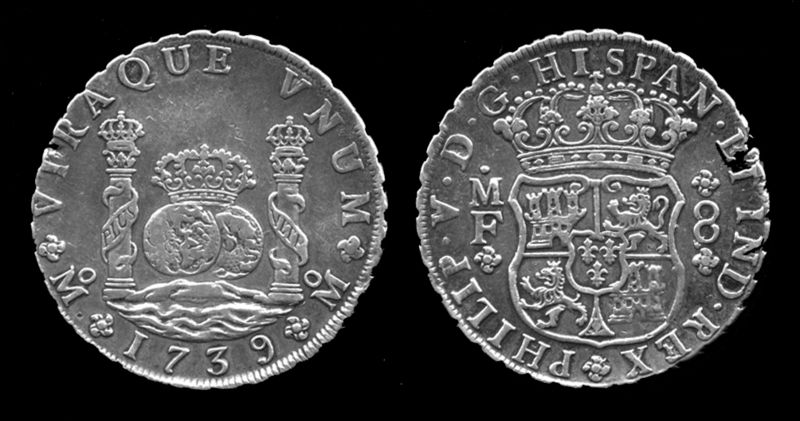I discovered the following just to be able to write that a character in my Pride & Prejudice sequel, ‘Easter At Netherfield: Darcy’s Dice With Fate’ set in 1799, thought that another character had lately been elsewhere than in England because that other had offered a Spanish dollar in payment for some goods. The implication was that she had been in America and therefore I had to check the currency used in America at the time!
Possibly this subject is routinely taught in North American schools, or indeed in the schools of other countries whose currency is expressed in dollars.
The English of course colonised North America until independence in 1783 (though some would probably maintain that independence arose at an earlier date). Probably like many, I have always assumed that the word ‘dollar’ is an American word, however research suggests that it was the English who invented the word ‘dollar’ long before independence.
The word ‘dollar’ appears to have come originally from the name of the town of Joachimsthal in Bohemia, now the Czech Republic, where silver was mined in abundance from the early sixteenth century. An alternative spelling of the town’s name seems to have been ‘Joachimstal’ and a large silver coin in the German states was called variously the ‘thaler’ and the ‘taler’, an abbreviation of ‘Joachimstaler’. The Low German word was ‘daler’. The site etymonline points out that the English word ‘dale’ (or valley) translates as ‘tal’ in German. The English name for the coin was originally ‘daler’ and later ‘dollar’.
The site etymonline also says that: “English colonists in America used the word dollar from 1580s in reference to Spanish peso or ‘piece of eight’ also a large silver coin of about the same fineness as the thaler” and that “the Spanish dollar probably was the coin most familiar in the American colonies…” Other sites confirm this.
The site of the Silent World Foundation says that: “The Spanish dollar was the coin upon which the original United States dollar was based, and it remained legal tender in the United States until the Coinage Act of 1857. Because it was widely used in Europe, the Americas, and the Far East, it became the first world currency by the late 18th century.”
Interestingly, a pamphlet, which I bought on a visit to the New Lanark World Heritage Site in Scotland, says that in the early 19th century, tokens or vouchers for use at the village store, built for the workers at the cotton mill who were paid partly in tokens or vouchers, included foreign coins, “such as Spanish dollars”. The pamphlet goes on to say that these coins “could be bought quite cheaply and, these were sometimes overstamped with the company name and a value, for example, ‘Payable at Lanark Mills 5/-‘.”
As to the dollar sign we know today, according to the site of Iberdrola and other sites, it developed from the Spanish coin, the real, the reverse of which showed the two columns of Hercules. The S shape is derived from the ribbons swirling around the columns. Iberdrola also say that it was the real which the English colonists called the Spanish dollar.
I think the attached image speaks for itself. ‘Easter At Netherfield’ is nearly finished and I hope to self-publish it early in the New Year 2024.


Recent Comments